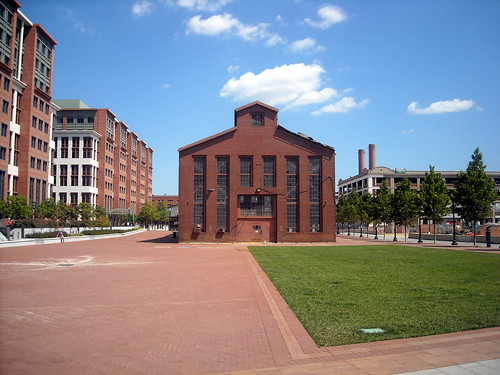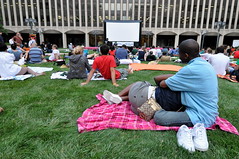
‘loves it’
courtesy of ‘NCinDC’
Welcome back to Where We Live, your bi-weekly tour of the District’s neighborhoods. This week the focus is Near Southeast, which is also commonly known as Navy Yard or Capitol Riverfront. This neighborhood has been completely transformed over the past several years, and the construction of the Nationals Stadium has redefined the character of the area. Read on to learn how the area has changed, what’s worth checking out when you’re in the area, and where to see some amazing before-and-after photos.
History: Pierre L’Enfant came along in 1791 and recognized that Washington’s waterfront retail would be its most valuable asset, and located its commercial center in this area. Then, in 1799, the Navy Yard opened (which happens to be the longest continually-operated Federal facility), and became a major shipbuilding center. This area was the heart of Washington throughout the 1800s, and the wharf was one of the most lively parts of the city. During wartime, the Navy Yard became even more important– it was a key defense of the city during the War of 1812, and during the 1940s, the Navy Yard reached its peak of 26,000 employees (by this point, it wasn’t shipbuilding but production of weapons ammunition that kept the Navy Yard so busy).
But all this production led to one very polluted river. And I-395 cut through the urban fabric of the neighborhood. After the war, the Navy Yard drastically scaled back operations– by that point, the commercial heart of the city had moved downtown. So Near Southeast was left with a polluted river, a terribly ugly highway overpass, and lots of abandoned buildings. It’s no surprise that this combination of factors led to crime, disinvestment, and neglect of buildings.
Continue reading →

